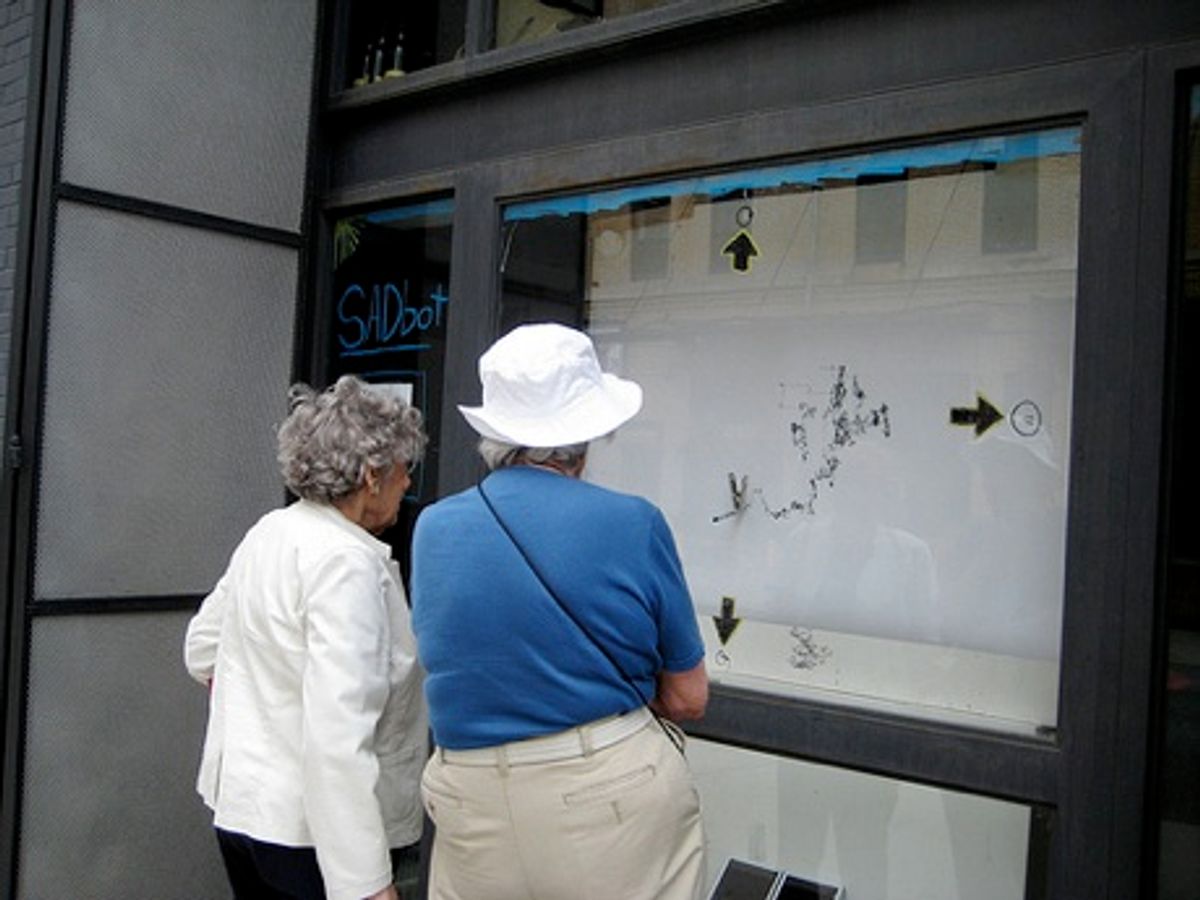Outside of New York City’s Eyebeam studio, an artist's hub dedicated to the convergence of art and technology, two women pause to see a pen doodling across a canvas behind a window. When they touch little circles on the glass, the pen changes direction.
“What’s this?” they ask. Then they read the description. This is a SADbot.
SADbot, or Seasonally Affected Drawing Robot, is a solar-powered, interactive drawing machine created by Eyebeam artists Dustyn Roberts and Ben Leduc-Mills. The contraption was on display this month at Eyebeam's Window Gallery in Chelsea.
When the sky is dark, SADbot stops doodling and "goes to sleep." But when the sun is out, SADbot lets people interact with it and doodles across a large canvas.
SADbot uses an Arduino microcontroller, four photocell sensors, a battery, and two stepper motors to control two cables attached to a pen. The electronics gets power from solar panels on the building's roof. But light not only powers the installation -- it also affects SADbot's behavior.
The interactive part occurs when a person stands in front of SADbot and covers up one of its photocell sensors, which the SADbot registers and then changes its drawing direction. By covering the sensors in a determined sequence, a person could do his or her own drawings.
But after checking the gallery's window where SADbot was to be installed, Roberts and Leduc-Mills noticed a problem. The window doesn't get much sunlight -- which would make SADbot, well, sad.
No problem. The artists built a rooftop mirror array to direct sunlight to a fixed mirror hanging off the ledge, which reflects light down to the gallery window.
If none of the photocells are covered, SADbot draws according to the programmed algorithm -- in the current case, small movements in random directions.
"At the moment its aesthetic is very small, random movements, or doodles," says Leduc-Mills. Since the project has been up, they've been filling up one canvas with doodles per day, which tells them that SADbot has received a lot of interaction.
Leduc-Mills wanted to create an interactive project that people could influence from the sidewalk so he took his ideas to Roberts, a mechanical engineer, and SADbot was born.
They met at NYU's ITP program, where Roberts teaches a class called Mechanisms and Things That Move. She will include SADbot in her book in progress called Making Things Move.
To build SADbot, the duo raised over US $1,000 in funding on Kickstarter.com, an innovative project-funding site, which paid for all of the bot's components. Depending on the size of the donation, backers of the SADbot project received SADbot drawings, mini SADbot DIY kits, and fully built miniSADbots.
SADbot uses open source platforms like Arduino, Processing, and EasyDriver motor boards, so it's easy for you to build your own SADbot!
Images and video: SADbot project, Dustynrobots/Flickr, Courtneybeam/Flickr.
More images:









